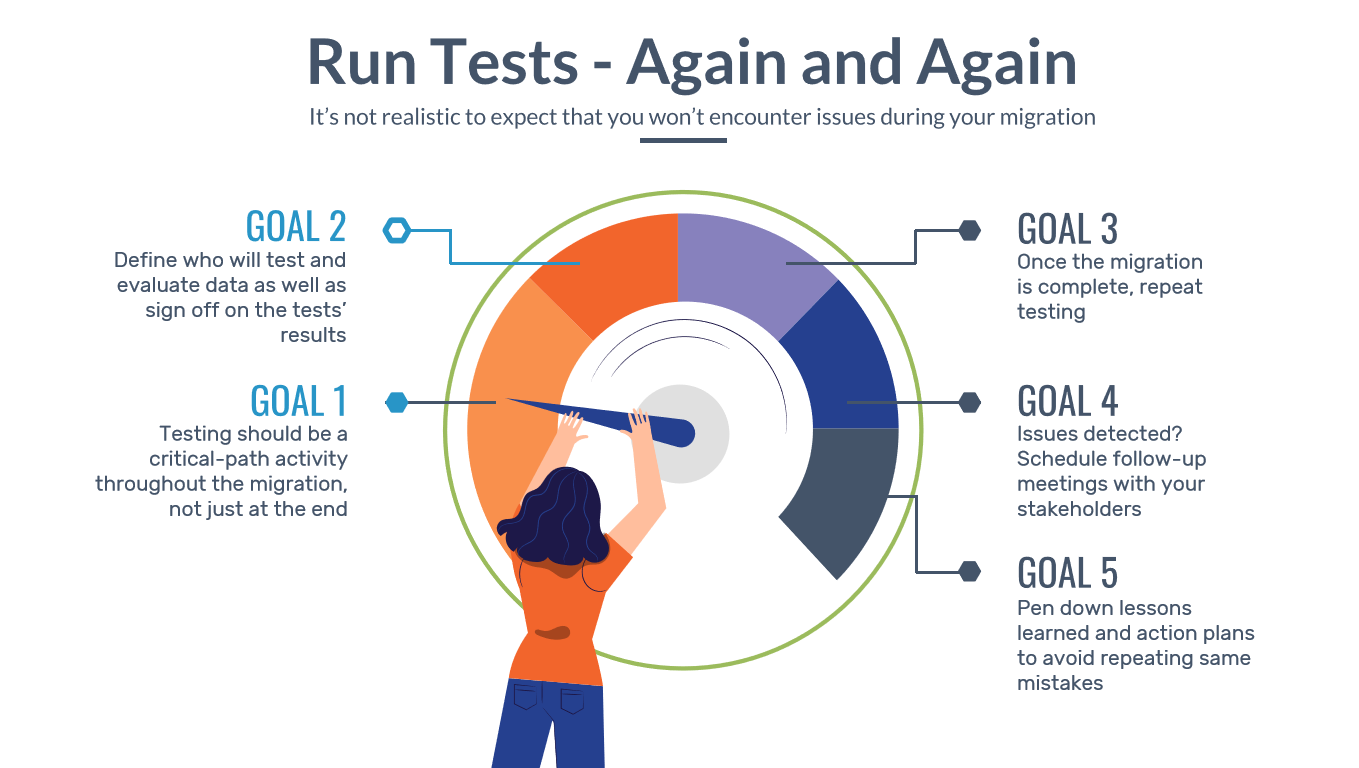One of the major reasons behind Data migration failure is not running enough tests. It mostly happens when we underestimate the importance of running frequent tests. Even after migrating all the records, the migration could fail if we haven’t run regular tests. It’s great to see how your plan is going as imagined but when migrating data, choosing to stay on cloud nine and assuming that everything is working is a red flag. All because the data loader went through a successful execution doesn’t mean that the entire data migrated successfully.
Which complies that even if the data loader files have run successfully, you still need to test. Why? Read further below to learn why you need testing, evaluating, and repeating during a migration process.
Run Tests – Again and Again
It’s not realistic to expect that you won’t encounter issues during your migration.

Goal 1: Testing should be on your critical path activity. Therefore, testing is a must at every step of the migration process.
Goal 2: First off, you have to identify the person in charge of testing, evaluating data, and then signing off on the test results. Always make sure that you have someone to test your system continuously and give you feedback. The feedback is crucial for you to move ahead. So, the person in charge is essential to improve your performance and minimize your efforts.
Goal 3: Once your migration is complete, repeat testing.
Goal 4: Once the issues are detected, you need to keep a follow-up meeting with your stakeholders to fix those issues, test them again, and then ask for their feedback. So it should look like a cycle of continuous testing rather than a one-time testing process.
Goal 5: Pen down the lessons learned and action plans to avoid repeating the same mistakes. If you have found issues, make sure that you’re not repeating the same mistakes. Data migration is not a one-phase process. It has several phases that need to be tested repeatedly in the instance.
If you’d like to read more about data migration pitfalls, do check the rest of our blog posts in this series.





